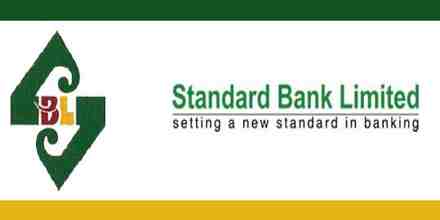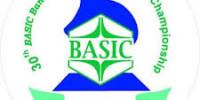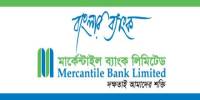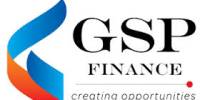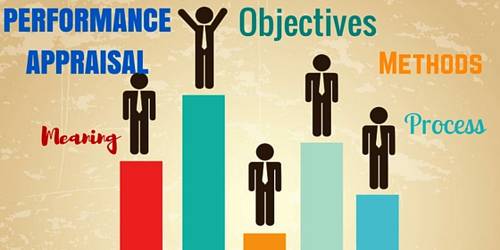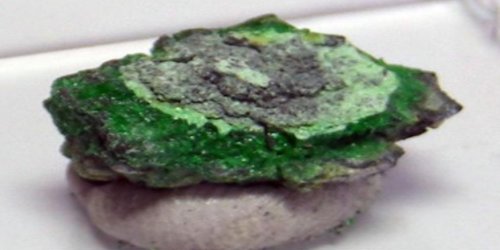Import Pattern Analysis of Standard Bank Limited
Bank is the most old and legendary media for financial transaction. In modern days banking facilitate clients with innovative services and products because of continuous effort of market research & development. As influencing number of banks establishing repeatedly so competitions are not exist within limited area. Now this competition are so intensive that local banks have to compete with international banks in a standard level.
Import is a key instrument of international trade. Bangladesh is one of the biggest importers comparing to SAARC listed countries. A sustainable economy depends on the major economic indicators like GDP, remittance, export, import and some other factors also. In order to growth successfully sound import has positive impact on country economy.
An Overview of Standard Bank Limited
Among financial service industries only bank can surpass other types of financial institutions in terms of providing wide range of economical services. It smooth the way of transition from barter trade to modern banking. Banks are strengthening countries economy by creating and transferring funds both inside and outside the countries. Banks facilitates an effective channel for cash flow like our vein through which blood circulates into the body. It carry out business by developing cost benefit customized products and technologically viable services for their possible customers. Now this sector became so competitive that every moment banks are finding innovative way to grab customer.
Standard Bank Limited (SBL) was established on May 11, 1999. It is a Public Limited Company which is under the Companies Act, 1994. Consequently it is listed on Dhaka Stock Exchange Limited and Chittagong Stock Exchange Limited. This is a third generation bank. The Bank inaugurated its business on June 03, 1999 achieved satisfactory progress from its commercial operations. At the very beginning of SBL the main goal is to contribute in the national economy being a submissive bank to its customers, shareholders and vendors. The bank is undertaking numerous services to provide its valued customers and businesses. SBL takes detailed and intensified strategic plan to survive and grow in this competitive banking sector.
Expansion
SBL come across 15 years by overcoming many ups and downs and now the bank is on its growth stage. Now it has 87 branches in which 20 branches is operated as AD (Authorized Dealer) branches. It has providing 24 hours online banking by setup 25 ATM network on its own and makes arrangements with other banks to access 3000 ATM for the customers. Credit Rating Agency of Bangladesh (CRAB) rated the Standard Bank Limited as “A1” in long term and “ST- 2” in the short term on basis of audited report. This rating state that SBL has enormous capacity of tackling credit risk and fulfill the commitment.
Products and Services
Bank is a service oriented business where products and services are its main business instruments to generate revenue. Standard Bank Limited facilitates general service for their worthy customer.
Beside this SBL introduced itself as a modern service provider by launching new and advanced products and services. New products and technology create SBL’s brand image, but a good relationship between customer & bank is very important. As a consequence Standard Bank Limited is also emphasizing on its personal relationship with their precious customer for who bank can sustain its business. Recently SBL has launched some new product of credit and deposit scheme depending on the customers’ requirement. The Bank concentrates on corporate and retail banking, as huge portion of profit comes from these services. Name of those products & services are given below.
Corporate Banking
SBL corporate banking serves to the wide range of clients starting from small and midsized business to large corporate by offering various types of loan or fund.
- Trade Finance: Standard Bank’s trade finance is customized product which is given to the business based on their requirements. In Trade Finance SBL counts only the performance of that business not the business secured collateral.
- Term Loan: According to Bangladesh Bank instructions Term Loan has been provided on the following rate. Bearing in mind that in case of risk possibility bank may re-fix ±1.50 over the mid rate.
- Lease Finance: In accordance with Bangladesh Bank Lease Finance rate table is given below in which bank may re-fix ±1.50 over the mid rate.
- Club Finance: In compliance with Bangladesh Bank orders the Club Finance lending rate has given below. Considering the risk association bank can re-fix ±1.50 over the mid rate.
- NBFI Finance: The table is given below by following the instructions of Bangladesh Bank where SBL may again fix the mid rate ±1.50 of NBFI Finance for risk association.
- Syndicate Loan: Bangladesh bank instructed rate on Syndicate Loan has revealed in the following chart. Regarding customer’s risk association bank may fix the rate again based on previous mid rate which is in between ±1.50.
- Commercial lending: According to Bangladesh Bank instruction the fixed rate of Commercial Lending given on the below chart. Here SBL also clarifies that this rate can have possibility to mutate if risk involvement is very high.
Mission & Vision
This phrase “A Modern Bank” says a lot about Standard Bank Limited. In 21st century without modern banking facilities no bank can carry forward their banking business successfully.
Mission and vision set the outline and target of SBL. Thus the employees can be dedicative towards the evolution encouraged by those following statements.
Vision
To be a modern Bank having the object of building a sound national economy and to contribute significantly to the Public Exchequer.
Mission
To be the best private commercial bank in Bangladesh in terms of efficiency, capital adequacy, asset quality, sound management and profitability.
Objectives
Standard bank limited has the dictum of walk around in the surroundings of computerized and technology based banking. SBL is facing new challenges of globalization where it want to provide competitive one stop service in cost effective price but quality will not be compromised.
It’s another core objective is to diversified its product and services to cover different business clients and obviously better than its competitor. SBL does not limit its area only to commercial business but also aims to target government, non-government and other sectors as well. The bank setup corporate ethical behavior to practice it’s within functional area as perform morality in banking is a part of CSR.
- To be a dynamic leader in the financial market in innovating new products as to the needs of the society.
- To earn positive economic value addition (EVA) each year to come.
- To top the list in respect of cost efficiency of all the commercial Banks.
- Earn profit not only doing business but also perform responsible business for society and
- To contribute on country’s economic development.
- To become one of the best financial institutions in Bangladesh economy participating in the most significant segments of business market that we serve.
Core values
Our Shareholders: By ensuring fair return on their investment through generating stable profit.
Our customer: To become most caring bank by providing the most courteous and efficient service in every area of our business.
Our employee: By promoting the well being of the members of the staff.
Community: Assuring our socially responsible corporate entity in a tangible manner through close adherence to national policies and objectives
Strategic Business Outlook
The bank is trying earnestly to evolving its business attending on changing competition and delicately handling upcoming challenges. Without measuring the size of business SBL is investing on different profitable sector. They want to enlarge this investing area by adding infrastructure, pharmaceuticals, power generation and iron industries. In addition the bank is expanding its business by means of opening new branches, one exchange house in abroad.
Market trends have setting on the basis of different variable like customer likings, behavior, competitor’s strength, weakness and so on. Diversified business for risk management, strategic business model, technology viable products, customer relationship and overall systematic control of management are the strong tools for setting conquering SBL’s vision.
Project Part –
Import Operation & Trends Analysis of Standard Bank Limited (Gulshan Branch)
Introduction
This part carries out the report title elaborately with concrete import operation or letter of credit process with an exemplary illustration. Build an outline on Bangladesh economic scenario, import progress on the country along with Standard Bank Limited’s import to make fundamental and valuable comparisons. According to major countries import payments a table has given in ascending order where the country-wise import payments indicating how much commodities are imported from and from where. SBL and Bangladesh import growth or import trend add significance on this report part. This part also portrays 5 years import share of SBL stand on our country’s total import and states some reasons behind SBL’s steady & unmatchable growth.
Potential advises have articulated on written form for pursuing the growth swiftly with a competitive manner.
Objectives of the Report
Broad Objectives:
In order to get overall idea comparative thought about Standard Bank Limited’s import samples and on Bangladesh import outlook and its future possibilities to be flourish as a lucrative division.
Specific Objectives:
- Letter of credit operation of SBL.
- Total import of Bangladesh, its affects on economy and other aspects.
- Contrasts of SBL import movement with country’s total import.
- Find out reasons for SBL’s lack of approaching in terms of detail and continuous alternative plan, as those are the impediments towards progress.
- Optimal recommendations through which SBL can make imperative changes on import.
- Providing a thought about the present import arrangements in Bangladesh.
Methodology
Behind an ideal report proper information is must. And collecting to the point information is the most challenging tasks of any report. I have collected information from a wide range of sources including national and international reports. Those sources are discussed below.
Primary Data Collection:
- Personal Observation
- Different types of job responsibility in internship period
- Notes on the spot about exceptional issues
- Consulting with knowledgeable and related officers
- Taking face to face interview
- Monthly import value taken from branch
Secondary Data Collection:
- Data collects from Standard Bank Limited’s head office
- Standard Bank Limited Annual reports
- Studying journals, articles, reports
- Assemble information from many websites
- Standard Bank Limited official website
Literature Review
Foreign Exchange Trade
Foreign Exchange Trade is not a new concept for us. This concept reformed on to the modern way gradually. Business people of any corner of the world are now enjoying modern banking privileges for advanced banking network. Foreign Exchange is worthwhile division as numbers of trade business are increasing day by day. Nowadays banks are doing competitive business so the diverse facilities increasing in addition. Foreign trade risk association is very far above the ground, so the involvements of bank or legal party can mitigate the risk in to a low level. Seeing that Bank taken more precautionary for safe trade business.
Import
Import is a trade mechanism of foreign exchange. If a person of one country wants to purchase goods particularly from another country by involving legal party is titled as import. The person who is purchasing good is called importer and the person who is selling the good to importer is named exporter. Legal authority means the bank and without the bank support no one can import or export goods across the border. Central bank of every country gives the authority to commercial banks to work as a medium of foreign trade.
Laws & Regulations for Foreign Exchange Division (Import):
- Foreign Exchange Trade setup and regulated under some national and international Acts and law. Foreign Exchange Regulation (FER) Act, 1947 (Act No VII of 1947) endorsed on March 11, 1947 under this Act Bangladesh Bank give permission of AD Authorized Dealer branch to transact Foreign Exchange operation.
- Authorized Dealer has to bring regulation to notice for their Foreign Exchange customers to trade properly maintaining the Act.
- Another Act is Import and Export Control Act, 1950
- UCPDC 600 (Uniform Customs and Practice for Documentary Credit) 6th revisions and proposal of International Chamber of Commerce (ICC) depending on these Banks and trade businesses are growing.
- Bangladesh Bank has detailed guideline regarding Foreign Exchange Trade for Importer, Exporter and bank. These guidelines are published on Bangladesh Bank websites and alternated by the bank when required.
Some Important Parties Related with Letter of Credit Process:
Applicant/Importer: applicant or importer who wants to purchase goods and for this purpose applicant request bank to open L/C.
Beneficiary/Exporter: Beneficiary who makes a deal with importer that he will sell the good to the importer and send the goods to importers country in exchange of money.
Issuing Bank: Issuing bank is importers bank who issue letter of credit on request.
Advising Bank: Advising bank works to advise the L/C and give the genuineness to the beneficiary. Mainly the advising bank chooses on behalf of exporter’s wish but it can be issuing bank branch or correspondent bank situated in exporter’s country.
Negotiating Bank: Advising bank can be negotiating bank if the bank is recommended by beneficiary. Negotiating bank negotiates the bill and gives payment to the beneficiary based on buyer’s draft.
Conforming Bank: Conforming bank assure credit in the lead and at the request of issuing bank. Conforming bank is generally the advising bank who gives this confirmation.
Reimbursing Bank: It is the bank who reimburses the payment to the negotiating bank after getting payment from issuing bank. SBL has “Nostro” accounts with these banks.
Issuing bank can be directly involved with reimbursing bank, cannot related with negotiating bank in some cases.
Opening L/C For The First Time an Importer Needs to Bring Following Documents:
- IRC or Import Registration Certificate
- Current Trade License
- Register Deed for partnership
- Limited companies have to bring Memorandum of Association
- TIN or Tax Identification Number certificate with updated tax clearings declaration.
- Submit Membership certificate collected from Chamber of Commerce
- Need to fill up bank’s CIB/Credit Information Bureau form
- Give loan approval application ( If Needed )
- Need to open an account in SBL
- Photographs
If importers declared as unclassified by Bangladesh Bank then bank can start L/C process with that particular party’s otherwise not.
Documents Needs to Submit to Issuing Bank for Issuing Letter of Credit:
All these formal documents are required to make agreement and issuing letter of credit. Every single AD have to have follow this in order to compliance with foreign exchange acts.
- Application form fill up detail by importer like name &address of importer and beneficiary, Bangladesh bank registration no, IRC no, Account no, shipment condition, L/C amount, moods of payment, media of shipment, country of origin, INCO term, charges, L/C maturity date, commission, margin and other charge if any.
- Proforma Invoice/Indent Invoice/Sales Contract.
- 6 copy of LCA Form (Letter of Credit Authorization) collected from bank and certain portion filled up by the applicant.
- IMP Form collecting from bank.
- Importers have to bring Insurance Cover Note with evidence of premium payment
- Charge Document ( Demand Promissory Note, Letter of Disbursement, Letter of Agreement, Letter of Revival, Letter of Continuity, Letter of Hypothecation, Undertaking, Letter of Authority, Customer Guarantee, Corporate Guarantee)
- Trust Receipt (If importer do not have sufficient money)
After approval of L/C application by branch manager and head office the above form have to be completed by the importer and then L/C is actually issued on the request of importer and on behalf of Exporter.
Type of Letter of Credit Depending on Payments
All these are moods of credit payment to exporter. SBL generally pays credit depending on the ways given below. It’s decided first before opening a Letter of Credit.
- Cash L/C: Cash Letter of Credit payments are given from parties’ cash deposit after receiving goods from beneficiary.
- Sight L/C: In sight letter of credit exporter sending the goods to importer and advising bank send necessary documents to issuing bank. After getting original documents in hand without discrepancies then issuing bank instantly gives payments to beneficiary’s bank. Within 7 days the payment has to give.
- Deferred L/C: In terms of deferred letter of credit the payments has been made in the maturity period means 90 days,120 day, 150 day which is decided between the two party. Mainly garments raw materials which are imported payments of those are given on this condition.
- Negotiable L/C: Negotiable letter of credit is a payment way where nominated bank purchased bill and which is also called bill of purchase. Negotiates the advance amount and by cutting interest, transaction fees, reimbursement charge beneficiary gets left amount.
- Acceptance: In terms of Acceptance the payment has not made immediately after obtaining documents. Here issuing bank gives acceptance message to the negotiating/advising bank. Sometimes exporter draws money by submitting bill of exchange at a discount rate from his bank or another bank
- Back to Back L/C: Back to back L/C is an arrangement where exporter becomes an importer and issues letter of credit against its first letter of credit. In case exporter needs to import raw materials using which exporter manufacture product and export those goods to other country. Here first L/C works as collateral. Back to back L/C contains 75% value of master L/C.
There are some other types of letter of Credit. Those are not that much known to all. They are Red Clause, Transferable L/C and so on.
Different Types of Account in L/C Operation
- Nostro Account: Nostro account is maintained with other banks on the basis of business currency outside Bangladesh in order to perform brokerage business of SBL group. It means “Our Account with you”.
- Vostro Account: This type of account is sustained with the intention to money transaction for foreign trade purpose. Vostro account is the opposite of Nostro account states that “Your Account with Us”. Suppose a Nostro account for SBL is Vostro account for HSBC.
Import Financing:
LTR (Loan against Trust Receipt): This loan payment period is not more than one year and bank is given the loan to its commercial customer to finance the purchase of goods through Letter of credit. Importer takes the loan based on the trust that by maturity period he will pay back the loan with interest.
LIM (Loan against Imported Merchandise): SBL makes advance on behalf of importer by retaining margin on its landed cost and compliance with the rules of credit division and Bangladesh bank. Here SBL takes letter of hypothecation of goods to retain goods with themselves and letter of undertaking is taking by them. If importer has not sufficient money to release the goods from port of discharge then bank generally gives advances in LIM. There are some other types of import financing exist in SBL.
Form of Documentary Credit
Documentary Credit is two types. Standard Bank Limited is generally issued irrevocable letter of credit.
- Revocable Letter of Credit: Revocable letter of credit is cancelled any time without confirming to seller. It is insecure L/C for exporter.
- Irrevocable Letter of Credit: in irrevocable Letter of credit applicant does not have authority to cancel L/C.
Documents for Payments and Other Purpose
Obligatory documents:
- Commercial Invoice
- Draft or Bill of Exchange
- Insurance Policy
- Bill of Lading or Airway Bill and Road Transportation documents.
Supporting documents:
- Origin of Certificate
- Insurance policy
- Packing List
- Inspection Certificate
- Quality Control Certificate
Import Operation of SBL: “Nitol Motor want to import truck from Tata Motor” Nitol Motor is a sister concern of Nitol Niloy Group who is a commercial client of SBL. Total process of letter of credit is described below where Nitol Motor is an applicant and Tata Motor is a beneficiary party.
Step 1: Issue Letter of Credit on Favor of Tata Motor
- Nitol Motors have to give and application subject to open L/C with carry proforma Based on the information given office notes are prepared by the import officer, two copies of office note are signature by branch Manager, Second Madam and foreign exchange in charge (AVP). Then one copy of office note is send to the Head Office for approval.
- After getting approval importer has to fill up the L/C application form, signature the charge documents and decides credit line for payment. Then officially letter of credit is being issued by the bank.
- Nitol opens sight L/C where 10% cash margin is agreed by SBL. The L/C amount is $20000 and Nitol is given $2000 as cash margin for issuing L/C. During first 15 day SBL give entry to Bangladesh Bank Online on LC Authorization Form Entry and LC Information Entry.
Step 2: Letter of Credit Send for Advising and Tata Motor is Financed for its Truck export
- SBL Gulshan Branch sends L/C through SWIFT/Telex/DHL and asks to advise L/C for Tata Motors to Standard Chartered Bank which is situated in India. SBL here uses SWIFT for sending L/C, one copy for Exporter and other for Standard Chartered Bank. There are some other copies for importer, Bangladesh Bank and office. Before sending L/C copy SBL’s foreign exchange in-charge check it which is called “Route”.
- Standard Chartered Bank then advises the L/C and check out the problems. If everything seems clear then Tata Motors is financed by the bank. Then Tata Motor can prepare the goods for shipment, before shipment Tata Motor have to collect Certificate of Origin from ICC, quality Certificate, authentic Commercial Invoice and drawn upon SBL. Tata Motor delivers the goods by sea with bill of lading, packing list issued by Shipment Company and other documents also.
- INCO term or Internal Commercial Term is decided by both parties. INCO term means FOB (Freight On Board), C&F (Cost & Freight) and CIF (Cost, Insurance, Freight)
Step 3: Tata Motor load the Truck on Ship and Submit Documents to Standard Chartered Bank
- After loading trucks on ship Tata Motor inform Nitol Motor and submit mentioned documents. Standard Chartered Bank checks those documents carefully and Send original copy to SBL through courier, sending e-mail before that as well. On the other hand Standard Chartered Bank pay off the left amount to Tata Motor excluding charges.
Step 4: Lodgment & Retirement of Documents
- Import officer of SBL go through each and every required documents. SBL make lodgment according to contract. SBL gives payment to the Standard Chartered Bank and send SWIFT message to the bank for given payment. Payment made on ACU dollar (Asian Clearing Union) according to agreement as India is a SAARC listed country. SBL also exclude charges from L/C amount.
- After lodgment SBL retiring the documents.
Step 5: Reports to Bangladesh Bank and Importer Pay Back the Loan
On the reporting date every AD branches of SBL has to submit original IMP form, original LCAF, along with Commercial Invoice & Proforma Invoice to Bangladesh Bank. Import officer report those information to Bangladesh Bank online where letter of credit information detail have to give. By this way Bangladesh Bank updates monthly import amount to its archive. According to term and period loan is payback to SBL with interest amount.
Import Trend in Bangladesh
Economic Scenario of Bangladesh:
Bangladesh witnessed global economic crisis on the years of 2008-2009 and 2011-2012. Globally it has been tackled by means of wide-range of financial strategies which has great impact on not only attaining economic sustainability but also create opportunities for investments in broad range. Bangladesh also fought against this crisis with long term goals to augment the economic growth rate through poverty alleviation, infrastructural development, technological development and lots more. Bangladesh is an overpopulated country. In last four years government of Bangladesh took initiative to convert the population to resource. GDP, import, export, reserve, and remittance are major economic indicators. On the year 2009-2012 average GDP growth rate 6.21%. Foreign Exchange Reserve in the year 12.70 Billion US dollar up to December 2012 which is four and half months payment of import. Average Export of 2009-2012 has been 20 billion US dollar increased by 2.79 times. Import payment also observer of rapid growth. In the year 2009-2012 import increased in three-folds than previous four years amount aggregated 115.35 billion US dollar. Though due to poor infrastructure and undeveloped energy sector import payment slow down in the year of 2013.
Bangladesh Import Sector:
Import demands on Bangladesh are huge. We are not capable enough to manufacture heavy machineries which needs to run like automobile industry, ship building industry, and garments industry. We have insufficient commodities comparing to population. Our neighboring countries are more advanced in these sectors. Thus we have fewer resources for production and more demands for consumption. Without imported goods growth of Bangladesh remains stagnant. In the very first stage of import Bangladesh mainly imported primary commodities. After 1999- 2000 the principal share of this segment decreased and a sudden growth rate shown on industrial and capital goods. As Bangladesh developed its agricultural sectors and want to expand industries. For this reason crude petroleum and cotton are imported more. Scenario has been changed gradually. Competing with others Bangladesh is developing import sector by detail guideline, new regulations formulated by Central Bank. Companies, traders, parties are now more concern about their rights and safety. Technological advancement has reduced the time and cost of worldwide communication. Banks compete with each other by providing optimal services. BB also planned for speedy transparency system as online import transaction have facilitate to finish total L/C process at most month. BB is encouraging import as well besides import. As a matter of fact Bangladesh Bank gives permission to 47 banks to open AD branches to all over Bangladesh.
Imports in the Year of 2005-2006
Cash, loan, short term loan, Grants are the mode of financing import. In the year 2005-2006 total import $14746 million including EPZ import. Cash is mostly used in import financing. On that year cash financing amounted to $12962 million. The imported items which are financed by cash are cotton yarn/thread and cotton fabrics, mineral oil, mineral fuels & products of distillation, bituminous substances. Mineral waxes, boilers, machinery, mechanical appliances, iron & steel, animal and vegetable oil & fats, cereal, salt, sulphur and so on. Countries who setup import relation with us are China, India, Kuwait, Singapore, Hong Kong, Japan are the top most in the list.
Imports in the Year of 2005-2006
Cash, loan, short term loan, Grants are the mode of financing import. In the year 2005-2006 total import $14746 million including EPZ import. Cash is mostly used in import financing. On that year cash financing amounted to $12962 million. The imported items which are financed by cash are cotton yarn/thread and cotton fabrics, mineral oil, mineral fuels & products of distillation, bituminous substances. Mineral waxes, boilers, machinery, mechanical appliances, iron & steel, animal and vegetable oil & fats, cereal, salt, sulphur and so on. Countries who setup import relation with us are China, India, Kuwait, Singapore, Hong Kong, Japan are the top most in the list.
Major commodities are cotton (all types), mineral fuel, nuclear reactors, boilers, electrical machinery, fertilizers, animal fats, plastics, vehicle, organic chemicals, photographic, cinematographic & surgical instruments, coffee, spices and so on. China, India, Malaysia, Korea, Japan, Singapore are major import countries.
Analysis on Import Progress on last (2005-2006 to 2012-2013) Six Years
The above chart shows the changes of import payments in the last 6 years. Dealing with the increasing population challenges Bangladesh facing huge demand surge. On the other hand FDI has boosted over the years. According to Bangladesh Bank statistics proposed FDI’s growth is 80.16% in last five years means increasing 770.04 US million dollars in amount. All these facts have impacts on increasing trend of import payments. Because FDI a benefit of globalization.
Foreign investors found Bangladesh as a flourishing country in last five years and invested their foreign currencies intend to setup businesses here. On consequence new types of factories established with imported capital machineries and these businesses creates opportunities to import more industrial raw material, goods from outside the country. The amounts also indicating that how our trade relation is emerging progressively. A country cannot rely on export only to setup business relationship. Import is harmonizing the way towards successive export business as well.
Balance of Trade
When a countries import payment is higher than its export cash inflow then it is called trade deficit. For healthy economy country wants to achieve balance in trade. Export increases the reserve foreign currency. High reserve can maintain country’s inflation rate. Trade balance of Bangladesh is always in deficit though export rate is gradually increasing. Bangladesh import rate is much higher than Asian developing countries and countries of SAARC on top. The fact cannot be ignored that imports also contribute to the country economy. If trade Gap between import and export remains small then it will be good for a sustainable economy.
Import Trend of SBL
Import Patterns of SBL:
The foreign exchange divisions of Standard Bank Limited are very promising as it intends to provide wide range of foreign trade services. From the inception period of SBL these AD branches are contributing to Bangladesh economic growth including bank’s international division. Import is one of the lucrative departments which are progressively overcoming its impediments step towards the growth. SBL is mostly financing import operation or it can be say in this way that documentary credit perform based on bank’s short term loan. Most of the industrial raw materials are imported in order to make final products. After that the proceeds pay back SBL’s loan amount. From the year 2009 to 2013 the import growth rate is 10.96%. The growth rate is average comparing to other banks. Total numbers of foreign branches are fewer matches up to SBL’s main competitors Prime Bank Limited, Dutch Bangla Bank Limited. And all those branches situated within Dhaka and Chittagong division. In this case the bank loses targeted importers or traders of other areas.
Countries (Including Commodities) Usually Import through SBL
SBL has setup worldwide import relationship. With the help of correspondents’ bank, Nostro & Vostro accounts with renowned banks, Standard Bank Securities Ltd. & Standard Express Ltd SBL communicating with all import related countries. The bank is maintaining this import relationship with more than 45 countries all over the world. The countries are China, India, Korea, Malaysia, Japan, USA, UK, Hong Kong, Singapore, Taiwan, Thailand, UAE, Indonesia, Switzerland, Italy, Germany, France, Pakistan, Vietnam, Netherland, Ireland, Spain, Hungary, Denmark, and Australia and so on. Main importing items of SBL along with its countries name are given below.
- China: Non-woven fabrics, cotton, edible vegetables, Pharmacy raw materials, food grain, inorganic chemicals, Edible fruit nuts, special woven fabrics, print color and so on.
- India: Food grain, raw yarn, vehicle, spices, tea, fruits & nuts, mineral oils & fuels, aluminum, earth stone, paper board and so forth.
- Malaysia & Japan: Rubber threads, animal & vegetable fats & oil, cosmetics chemicals, equipments, electrical machinery, manmade fiber and the rest.
- Indonesia, Hong Kong, Thailand, Singapore & Italy: Raw yarn, pharmacy packaging materials, acid & other chemicals, crude palm kernel olein, glass & glassware, woods and
- so on.
- UAE, Germany, Hungary & France: Mobile phone. Medicine. Software, medical instruments, construction equipments.
- USA & UK: Cosmetics, construction equipment’s and garments raw material.
Commodity-Wise Ratios of SBL
Interpretation: SBL ratios of import are quite different from Bangladesh import ratios. Most of the import share captured by others commodities like construction machineries, technological item, Machineries for misc. industry, petroleum & petroleum products and last but not the least EPZ imports which high in SBL. Second highest ratio indicates that SBL also import industrial raw materials in a huge bulk. Then 13%, 9%, & 5% ratios are consecutively for capital machineries, consumer goods and intermediate goods.
Reasons behind These Anomalies
Commodity-wise imported items are more or less same in SBL comparing to Bangladesh. Main contrasts are in the amount or percentage of imported goods. According to Bangladesh total import third & fourth highest commodities position goes to consumer goods and industrial raw materials. On the other hand capital machineries and consumer goods are in the third and fourth position consistent with the SBL data. Reasons are found out through analyzing some related factors.
- Location Wise Demand: 13 branches are situated in Dhaka division among 20 AD branches. Most of the industries concentrated within this divisional area. Capital machineries are imported by textile, garment, leather, and pharmaceutical industries. And the branches like Banani, Panthopath, Gulshan-1, Gulshan-2, Uttara, Dhanmondi, Topkhana are the key branches for mainly importing capital machineries. The majority are located in those areas where amount of imported capital machineries more than consumer and intermediary goods.
- Clients Capturing Strategy: Maintaining personal relation, collaboration for build up more connection through previous clients is the approach for capturing clients. In this way bank do not focuses on diverse client category, as creating more clients through previous relation means remaining in almost same type of group. Thus the bank could not match up with Bangladesh import scenario and diversifying the area of import goods.
- Political Instability Increase the Ratio of Local Import: 2012 & 2013 are the years of political instability where due to violence, riots, hartal imported goods laid on the ports for months for that reason importers discouraged for incurring huge loss. Importers just wanted to avoid the foreign import. But local import took place on that time because of safety issue.
Comparison between SBL & Bangladesh Import Growth
5 years comparison state that the gap is huge between SBL and Bangladesh import pattern as the fluctuations of these two chart has been opposite from each other. In the year of 2010-2011 when Bangladesh import increased by roughly 10000 million dollar while in 2011 SBL import lessened by 80 million dollar. This is a very unusual distinction.
Reasons behind This Gap
Analysis on the last five years import amount brings out some remarkable irregularity between Bangladesh and Standard Bank Limited. Some valid reasons has been manipulated the import of SBL.
Exchange Rate: Import business is totally based on foreign currency and its profitability is depends on the exchange rate of those foreign currencies. In last five years our value of taka has decreased significantly. Mainly this value decreased against USD value. Standard Bank Limited’s import payments are cleared mostly in USD. As consequences the bank has to spend more taka to convert into USD. In the year of 2011& 2012 this factor hampers a lot SBLs import growth.
Economic Depression: World economy witnessed another downturn in the year of 2011- 2012. Though Bangladesh tackled the depression surge very stealthily and tactfully. But within the boundary area of Bangladesh SBL got the impact of world economic recession. Mainly that time developed countries of western side confronted with this crisis. Unfortunately on recession period Standard Bank Limited has many importers who wanted to import goods from that part of the world; as a matter of fact those demands went into vain. Due to little amount of business and trustworthiness other banks situated on USA, UK, and Europe not interested to give payments on behalf of SBL in a continuous manner. In the consecutive years 2011 & 2012 SBL losing its ground for the adverse condition.
Decreased FDI: With the help of FDI (Foreign Direct Investment) Bangladesh commenced and developed EPZ (Export Processing Zone). And in every year SBL open letter of Credit for local import through EPZ. On going global economic depression exerted its impact on FDI. During last 5 years the growth of FDI was dissatisfactory especially in FY 2011 the amount of FDI was 779.04 US million dollars which was 913.02 US million dollars on FY 2010.
Differences Occurred for Comparing between Financial Year and Calendar Year: The gap between financial year and calendar year are six months. Import payments of SBL are given in calendar year and Bangladesh import data are found in financial year format. Because of the time distance import amount gap has been occurred but not in serious manner.
Numbers of AD Branches are less in Previous Years: Till the end of 2012 Standard Bank Limited opened 17 authorized dealer branches or foreign exchange branches. Now the number of branches reached to 20. With this increasing number of branches the amount of import is also increasing which resulted for escalating import payment in the year 2013.
Renowned Bank: Standard Bank Limited is a commercial bank and it mainly concentrated on corporate banking. It is a third generation bank but comparing to the other banks SBL lagging behind due to its focal point. Renowned banks can also gain trustworthiness. Thus SBL import clients are increasing in a sluggish rate. Numbers of imported goods were also less in amount in the year 2011 & 2012.
Recommendations/Possible Findings for SBL Intent to Increase Import Amounts
Based on the basic limitations some recommendations are given by experts of SBL. I suggest some points from my analytical view. These recommendations with proper justification can actually work on the limitations.
Expert’s Commendation
- Target Customers of SBL: Standard Bank Limited wanted to expand the business gradually but in a broad way. Its targeted industries are mainly agricultural, textile, food and allied, pharmaceuticals, leather, chemical & cosmetics, cement & ceramic, service, transportation, communication industries. SBL more or less cover all their targeted industries and have planned to grab those industrial import demands in huge amount. They also have plan to target some flourishing industries of recent times like fish feed, fertilizers and poultry feed industries. They sought after to explore mass market demand.
- Product & Service Policy: In recent times Standard Bank Limited inaugurated some new automated products and services. The bank also takes initiatives to provide more customized services. In order to build concrete telecommunication and transaction network SBL setup more power full relation with renowned banks.
- Road Shows: Standard Bank limited has plans for starting road shows near future. They think in a big way that without this present-day method they cannot reach to their huge clients group. The bank’s is making plan to carry out road shows successfully intent to achieve the goal.
Recommendations from My Point of View
- Different Media for Advertising: According to the present-day demand Standard Bank Limited can reach to the valuable clients virtually not physically. Because now more rely on online banking than physical banking and attracted to bank offers through internet, television and other means of technological amenities. As internet browsing, surfing included on everyday task, so the bank can take initiatives to take these medium their brand promotional activities.
- Have to Improve Performance: SBL have to be more cautious about quality of performance. In order to outperform maintenance of logistics support is the crucial factor. Information Technology division will be more power full for making total automated system speedy and technological advanced.
- Segmentation & Risk Diversification: Market division should make groups consists of marketing officer for different product and service wise like import promotion, export promotion, SME promotion group. Their core task should be division wise performance & requirement analysis, location wise import promotion, find out more opportunities to motivate new growing industries clients, make sub category of business structure. Not stick to large or medium corporate business group and dividing the bank’s risk among these segments.
- More concern about competitors strengths as well as weaknesses: Standard Bank Limited’s must be more aware of their competitors strengths and weaknesses along with possible future opportunities for which other competitors may have chances to attain more market share on import. SWOT analysis is about overall business. For increase the growth rate of import SBL have work on competitor’s information and work for opportunities.
All of the recommendations are given above regarding on limitations and for SBL concern. From different sources and data helped me to recommend those ways.
Conclusion
Standard Bank Limited is commencing the banking business to add economic value and shape itself as one of the top listed commercial bank. The bank is totally dedicated toward its stakeholders and profiled good image like a compliance follower of government rules. SBL is in its prime stage of growth. The bank’s import divisions consist of diligent employees whose dedicated motives are making import position strong in steady manner. From the beginning to till present banks developments are commendable. Now it needs only time and tactful resolution to bring evolutionary change as its admirable management and executive team are capable enough to run the bank successfully for surpassing expected outcome.
